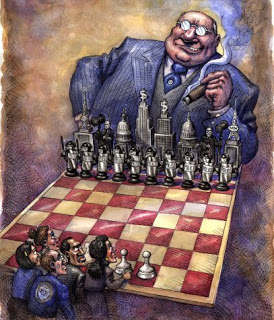Timothy Noah
Slate
In 1915, a statistician at the University of Wisconsin named Willford I. King published The Wealth and Income of the People of the United States, the most comprehensive study of its kind to date. The United States was displacing Great Britain as the world’s wealthiest nation, but detailed information about its economy was not yet readily available; the federal government wouldn’t start collecting such data in any systematic way until the 1930s. One of King’s purposes was to reassure the public that all Americans were sharing in the country’s newfound wealth.
King was somewhat troubled to find that the richest 1 percent possessed about 15 percent of the nation’s income. (A more authoritative subsequent calculation puts the figure slightly higher, at about 18 percent.)
This was the era in which the accumulated wealth of America’s richest families—the Rockefellers, the Vanderbilts, the Carnegies—helped prompt creation of the modern income tax, lest disparities in wealth turn the United States into a European-style aristocracy. The socialist movement was at its historic peak, a wave of anarchist bombings was terrorizing the nation’s industrialists, and President Woodrow Wilson’s attorney general, Alexander Palmer, would soon stage brutal raids on radicals of every stripe. In American history, there has never been a time when class warfare seemed more imminent.
RELATED ARTICLE:
10 Signs the U.S. is Becoming a Third World Country


Be the first to comment on "The Great Divergence: The United States of Inequality"